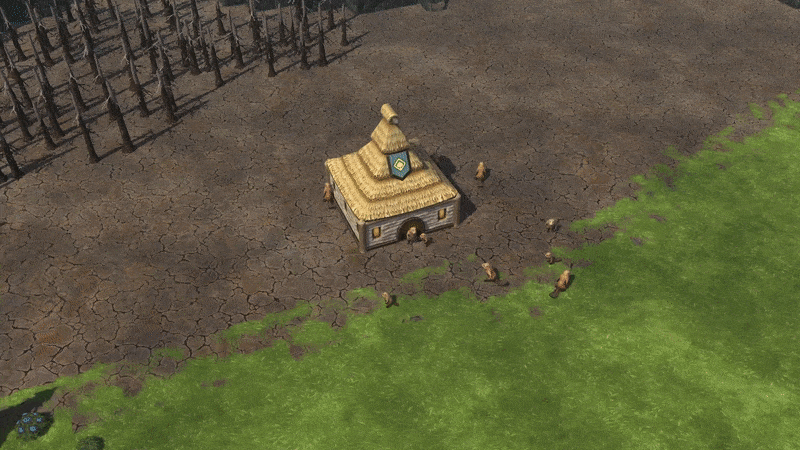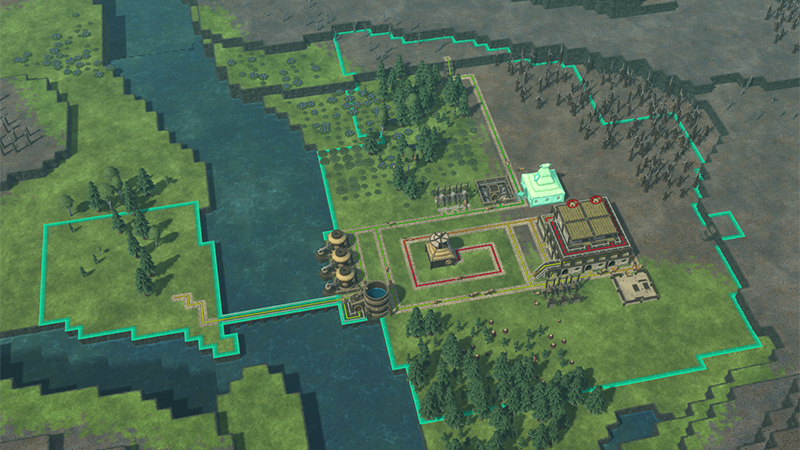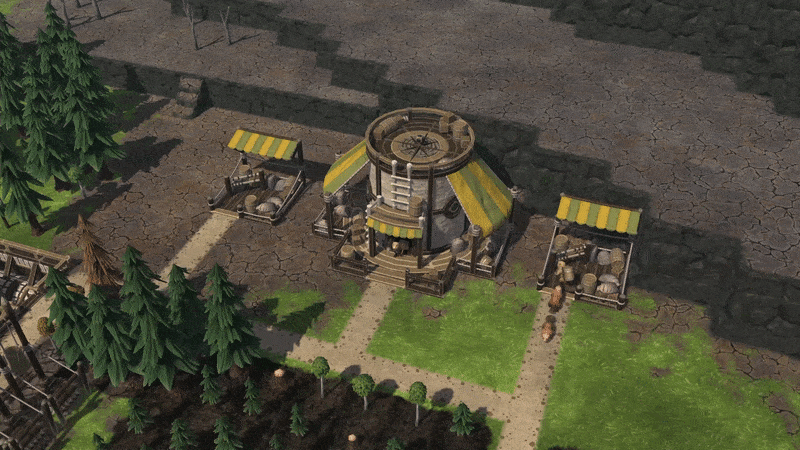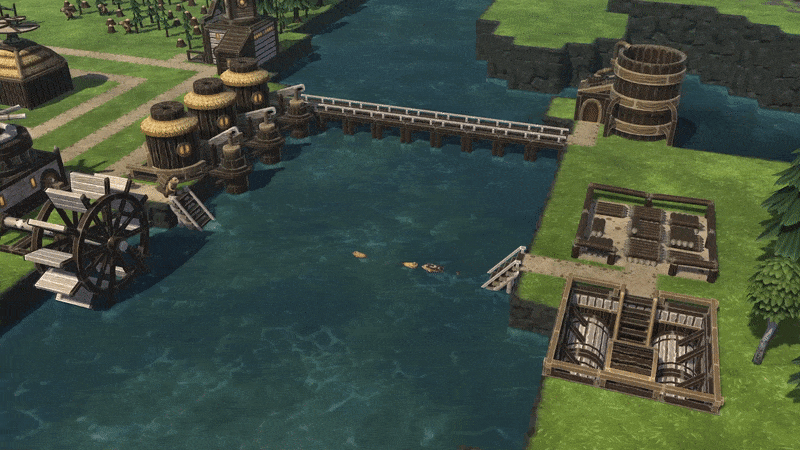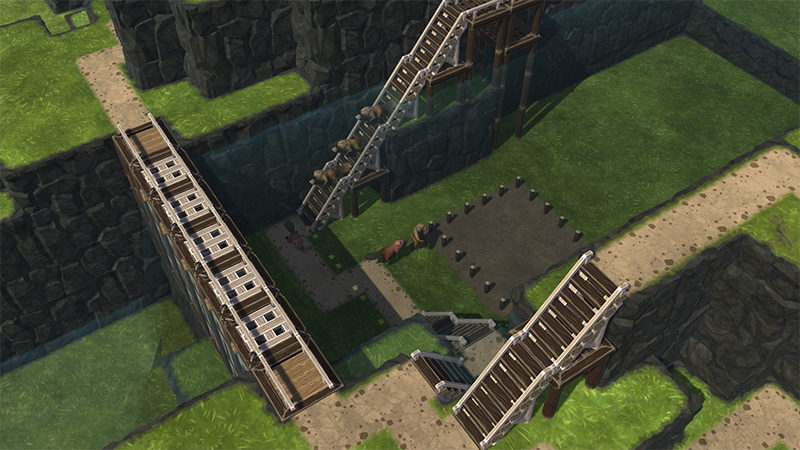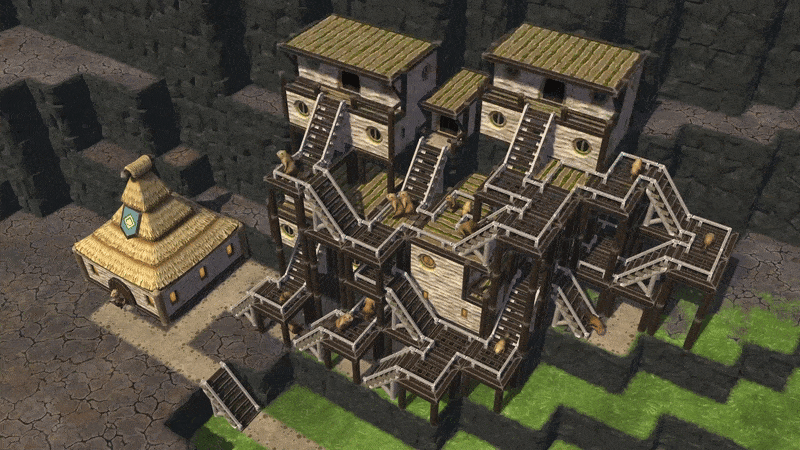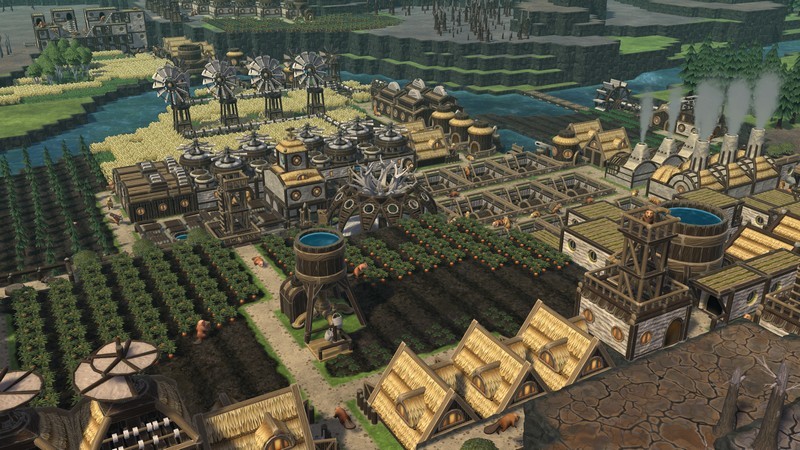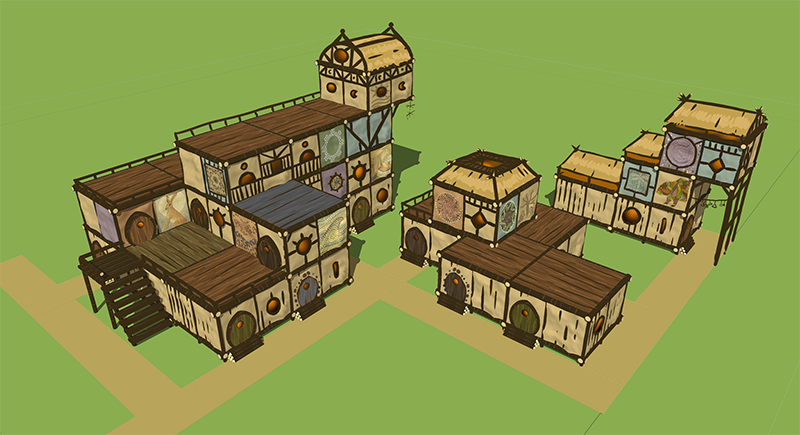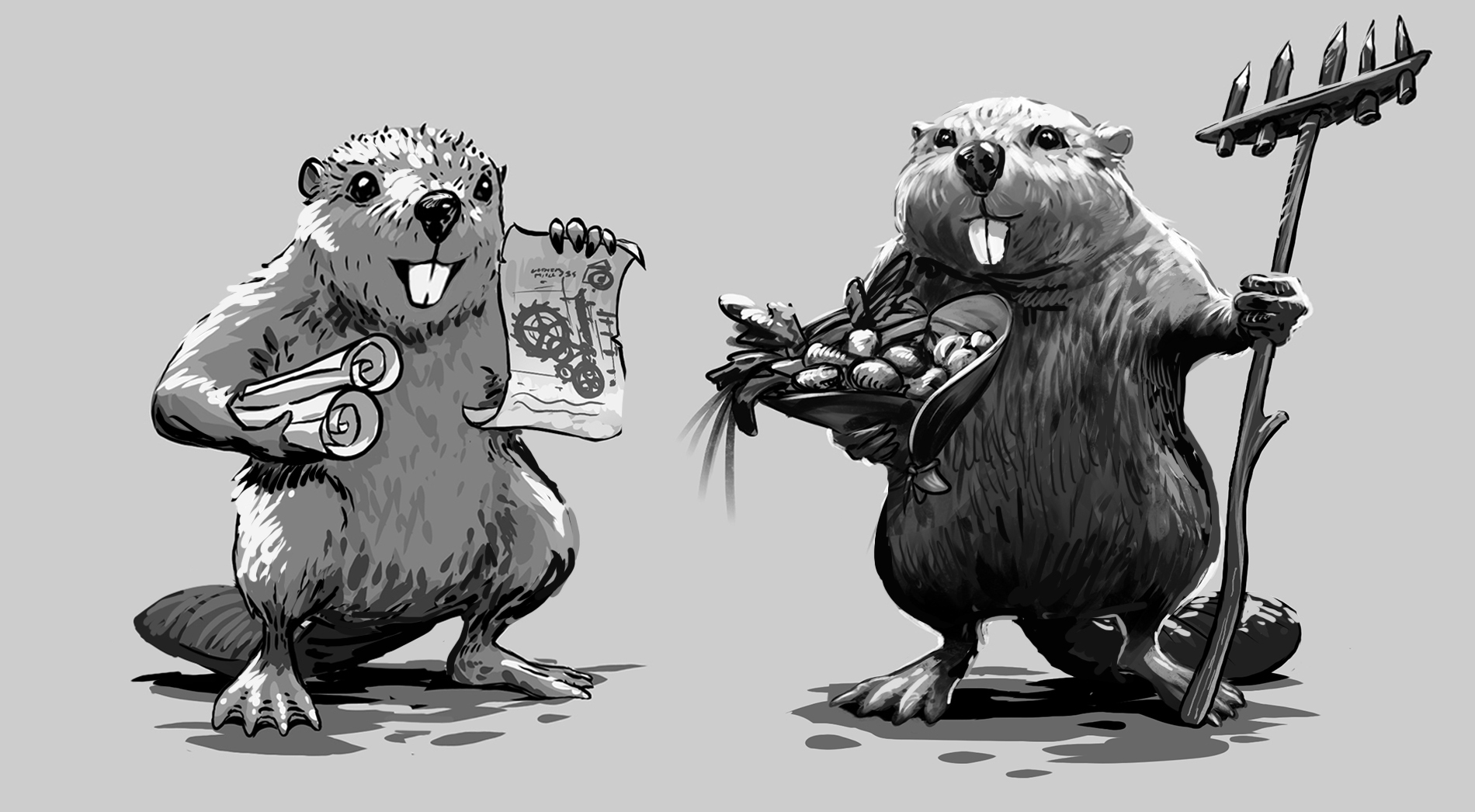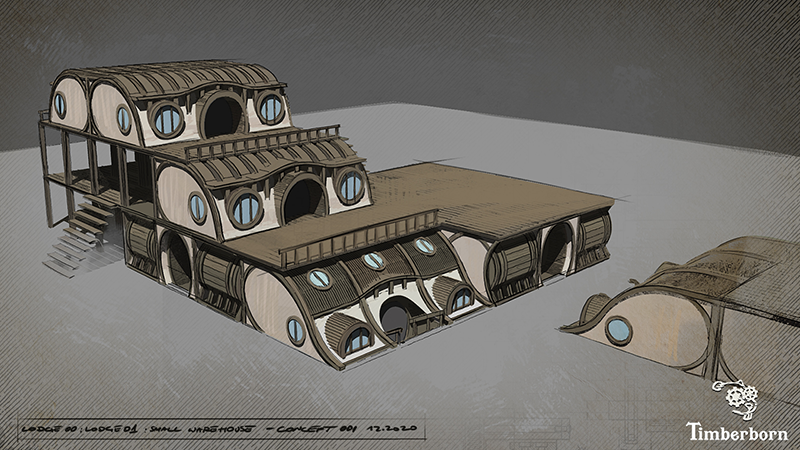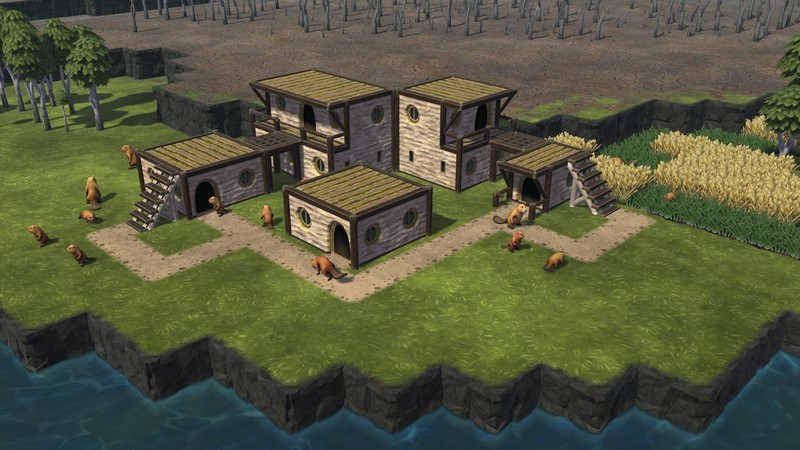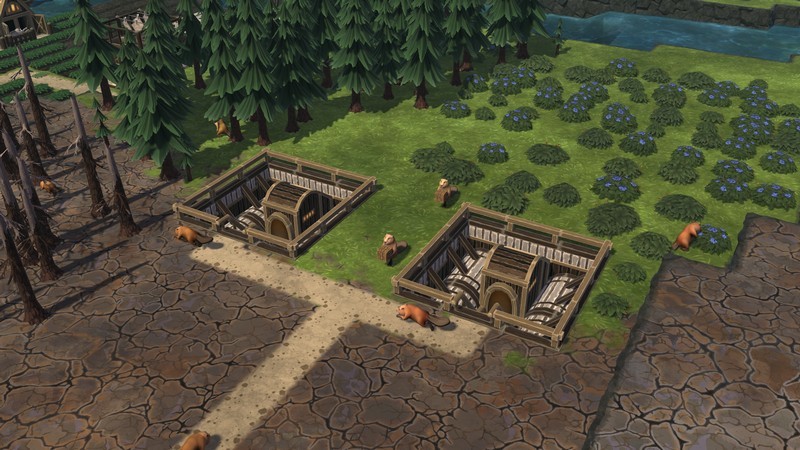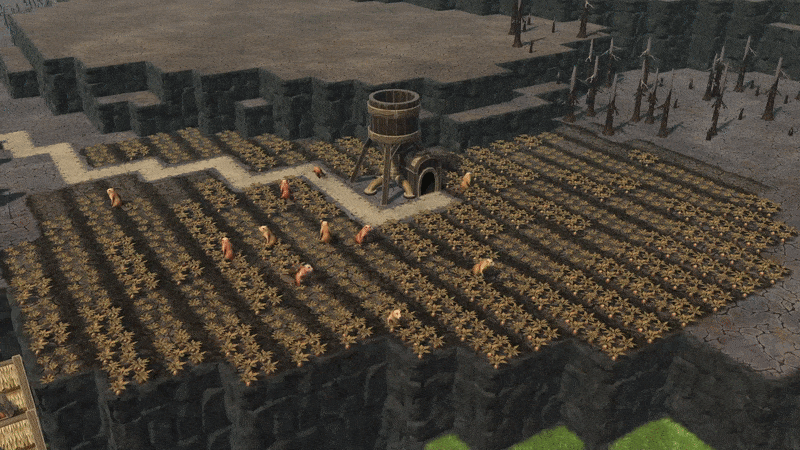
Sep 3, 2021
Timberborn - Miami_Mechanistry
Hi there!
If you missed the memo, Timberborn Early Access launches September 15! There’s a lot of new stuff coming to the game, some of which we’re still keeping a surprise. But today, let’s talk about the second playable faction, the Iron Teeth beavers!
We have first revealed the faction in a trailer shown at Awesome Indies Show Gamescom by IGN. If you have missed it, here it is again, this time without our comms manager's cat tree and babbling.

We wanted Iron Teeth to be more or less a counterpart to Folktails. Our idea for their colonies was to use that darker, industrial theme with blocks of tall, brick-like buildings. Engines are there too, emitting smoke and propelling Iron Teeth’s progress forward. Because of their reliance on power and higher water consumption, we envision the Iron Teeth settlements as tighter, more squeezed in and vertical compared to Folktails’ vast villages in the midst of golden fields.
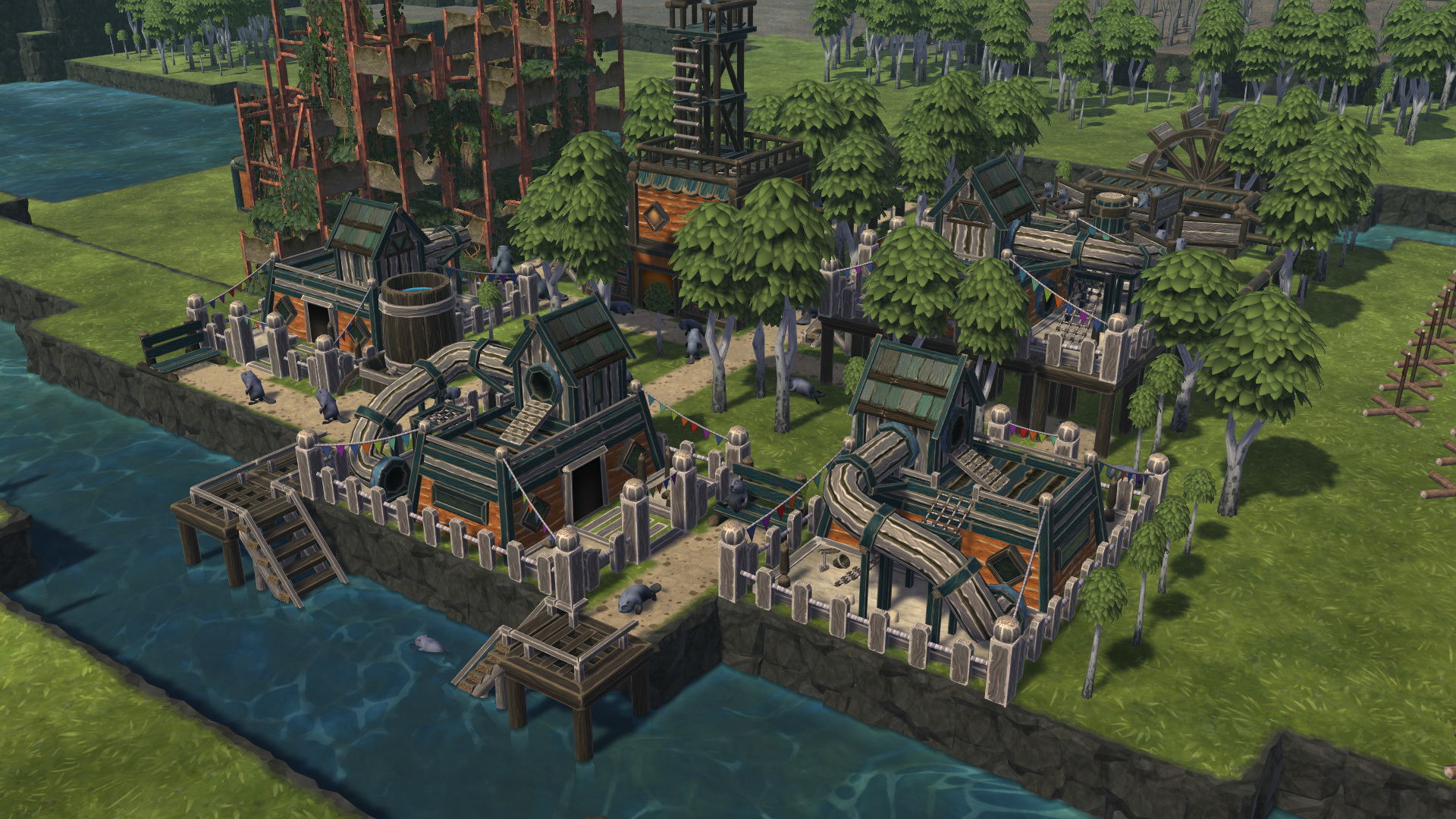
Nurseries have been scrapped... but our beaver-eyed viewers might have spotted them in Timberborn's early access trailer, which was recorded while they were still a thing.
The idea looked good on paper, but Nurseriers turned out to be a balance problem (a few nurseries would be enough for a huge town) and hard to explain. So, even though we had a really nice 3D model, we had to scrap them and eventually replace. Breeding Pods work much better in both regards, but also feel more post-apocalyptic AND add a unique “production chain”. You'll read more about them in a moment.
They were going to be the tough, hard-working guys, we knew that right from the start, and the name *Iron Teeth* came up early. No wonder their graphite-like, bluish fur resembles steel, while their buildings are covered with wooden roofs similar to patinated metal. The engineering feats of this faction pushed us to search for inspirations in the 19th-century industrial revolution. We matched that with the architectural shapes and colors influenced by the native communities of the Middle East and Latin America, resulting in the orange-and-indigo mix you can see.
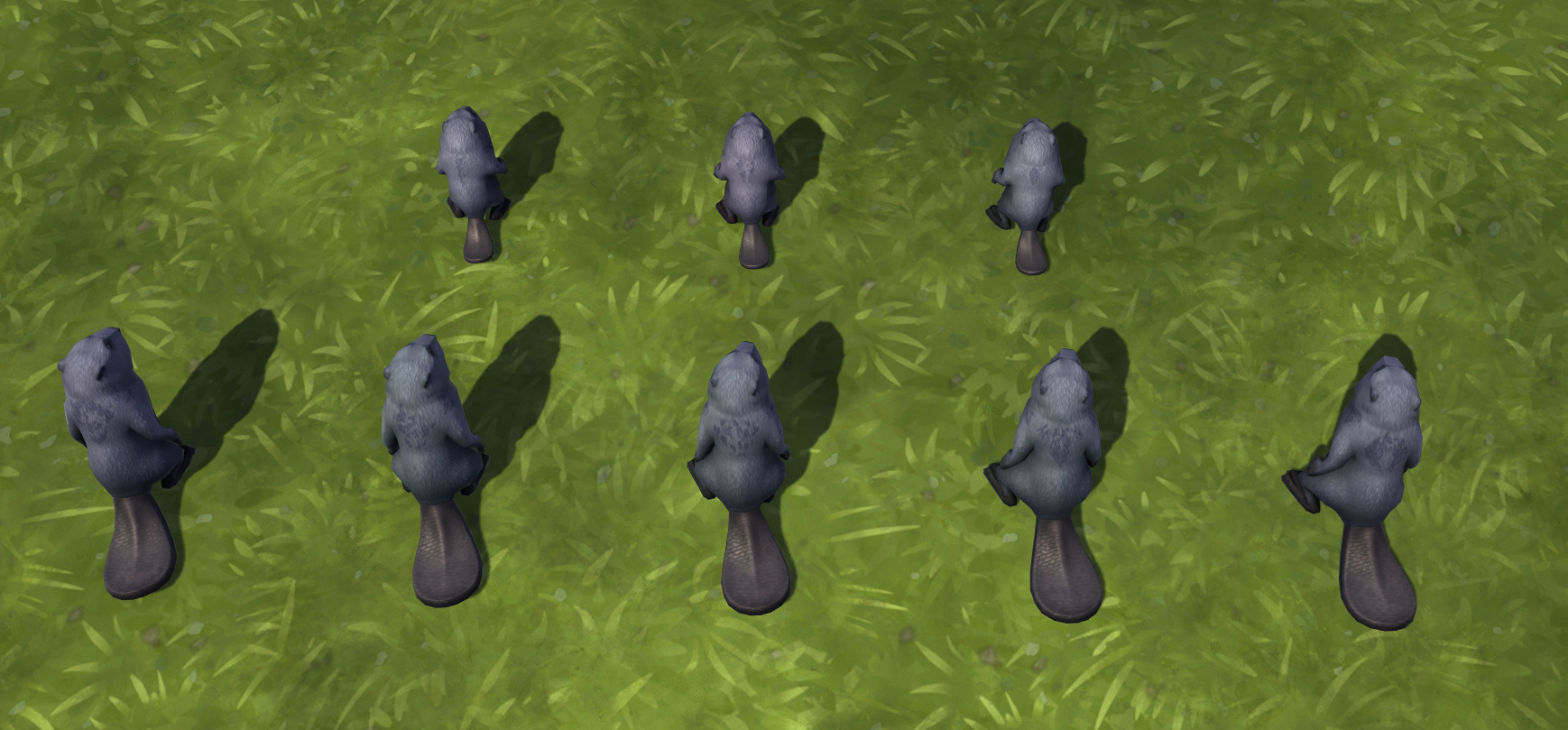
It's the little things like subtle patterns on the fur.

An old screenshot showing older textures and models. The large building in the center was a "new" Builder's Hut before the idea of District Centers was born, and the Hut received yet another model.
Michal Zomerski, Timberborn’s 3D Artist, chimes in to talk about the design process behind the Iron Teeth buildings. Thanks for the spoilers ahead of the next paragraph, Michal. Sheesh.
The Iron Teeth live in the industrial barracks and the London-like rowhouses, and they get to stack their log piles, which means densely populated areas quickly turn into tall clusters of buildings. But we didn’t want to just give them cuboid blocks of flats, hence the slanted walls and a design that allows power shafts to connect “through” windows. On the other hand, we got to play with metal and, for example, redesign the engine. This one has a dedicated power connector which allowed us to play with the model and draw inspiration from DaVinci’s works.
Also, here’s a bit of beaver trivia. Beavers’ incisors (teeth) have an orange enamel because of a high amount of iron. Also, Timberborn’s working title was Iron Teeth. Makes sense, huh?
They work hard and need to quench their thirst often which results in 15% more water consumption.
The above has been removed with the addition of Difficulty Modes where you can customize the consumption rates regardless of faction.
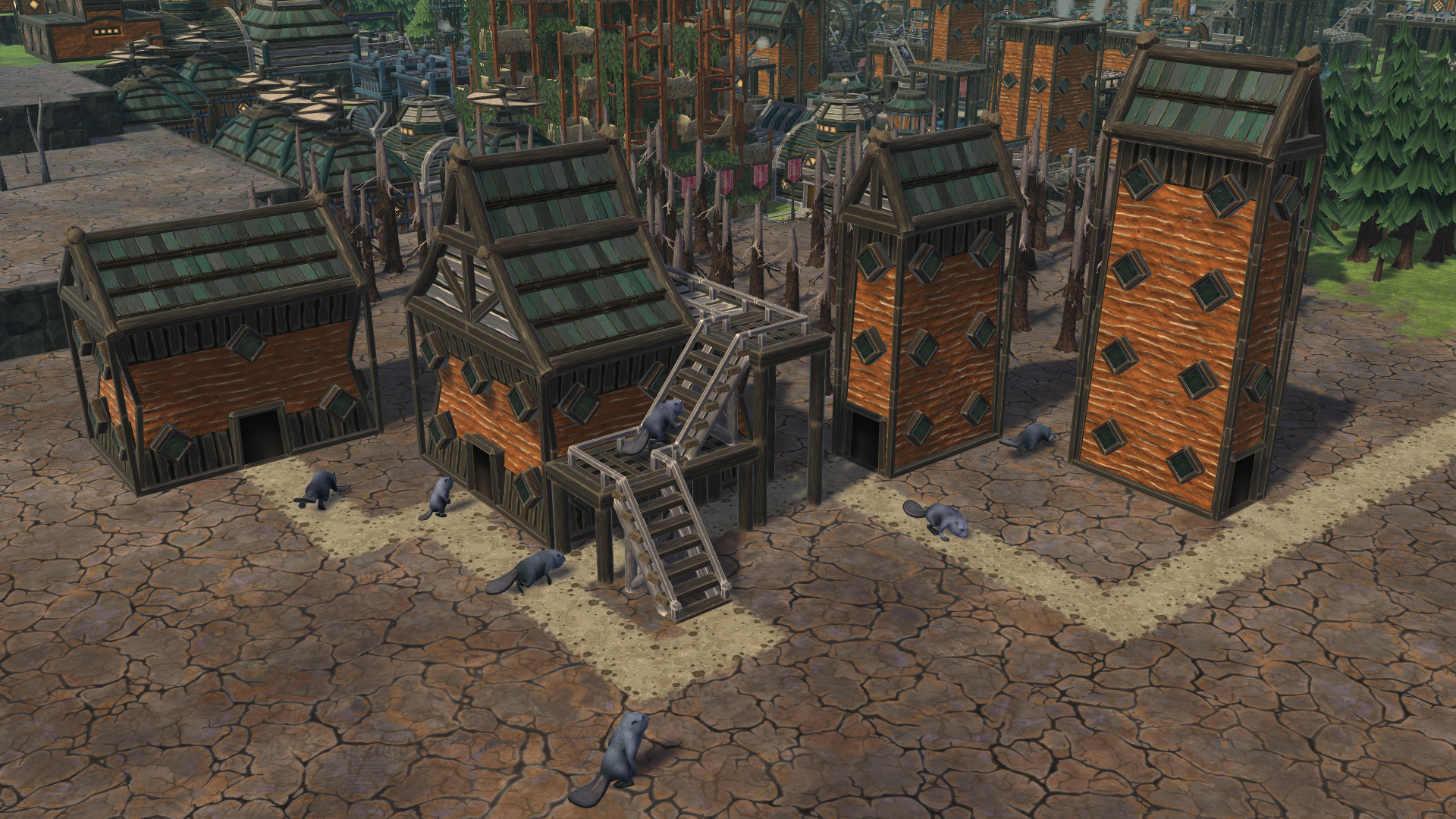
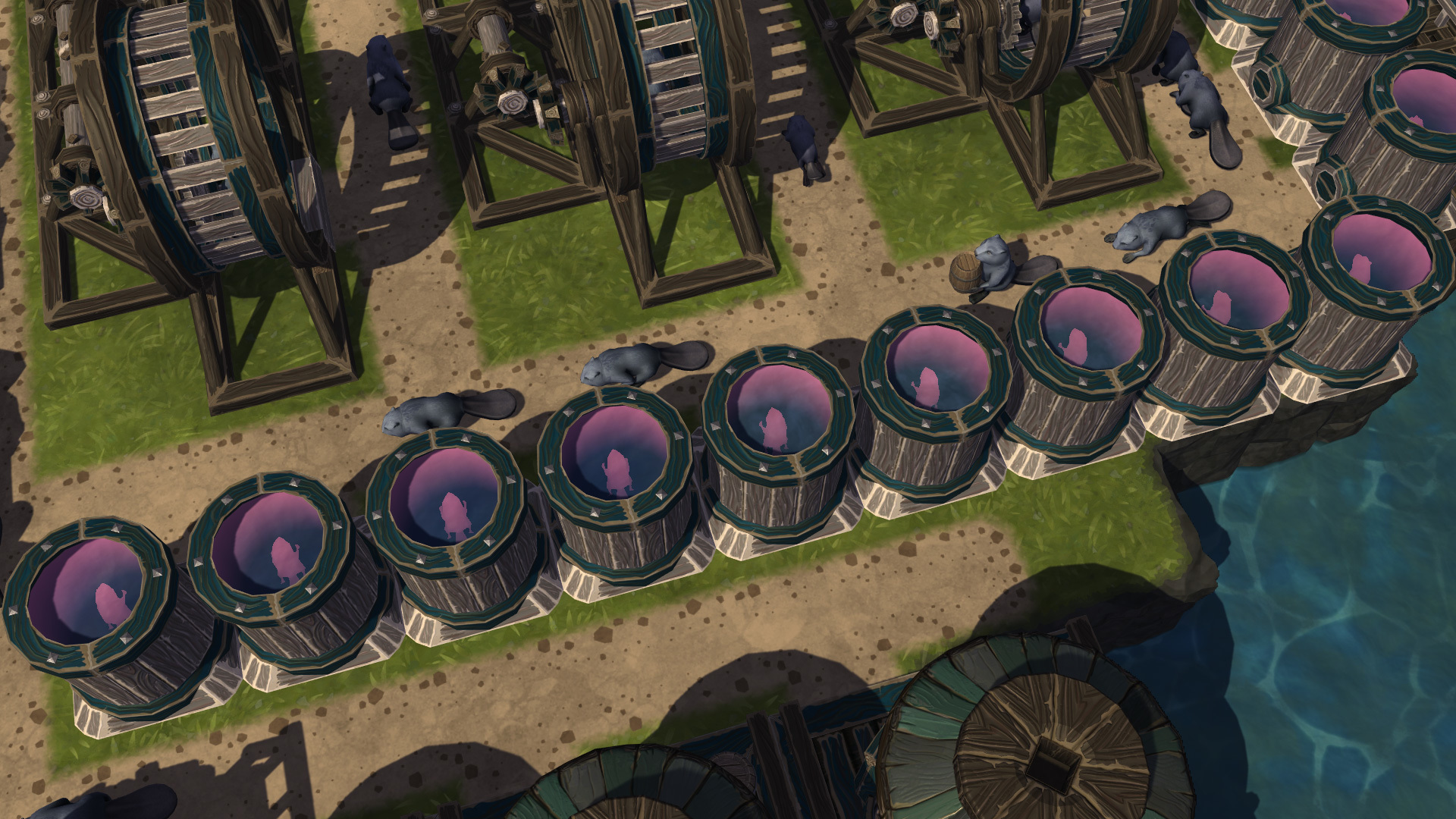
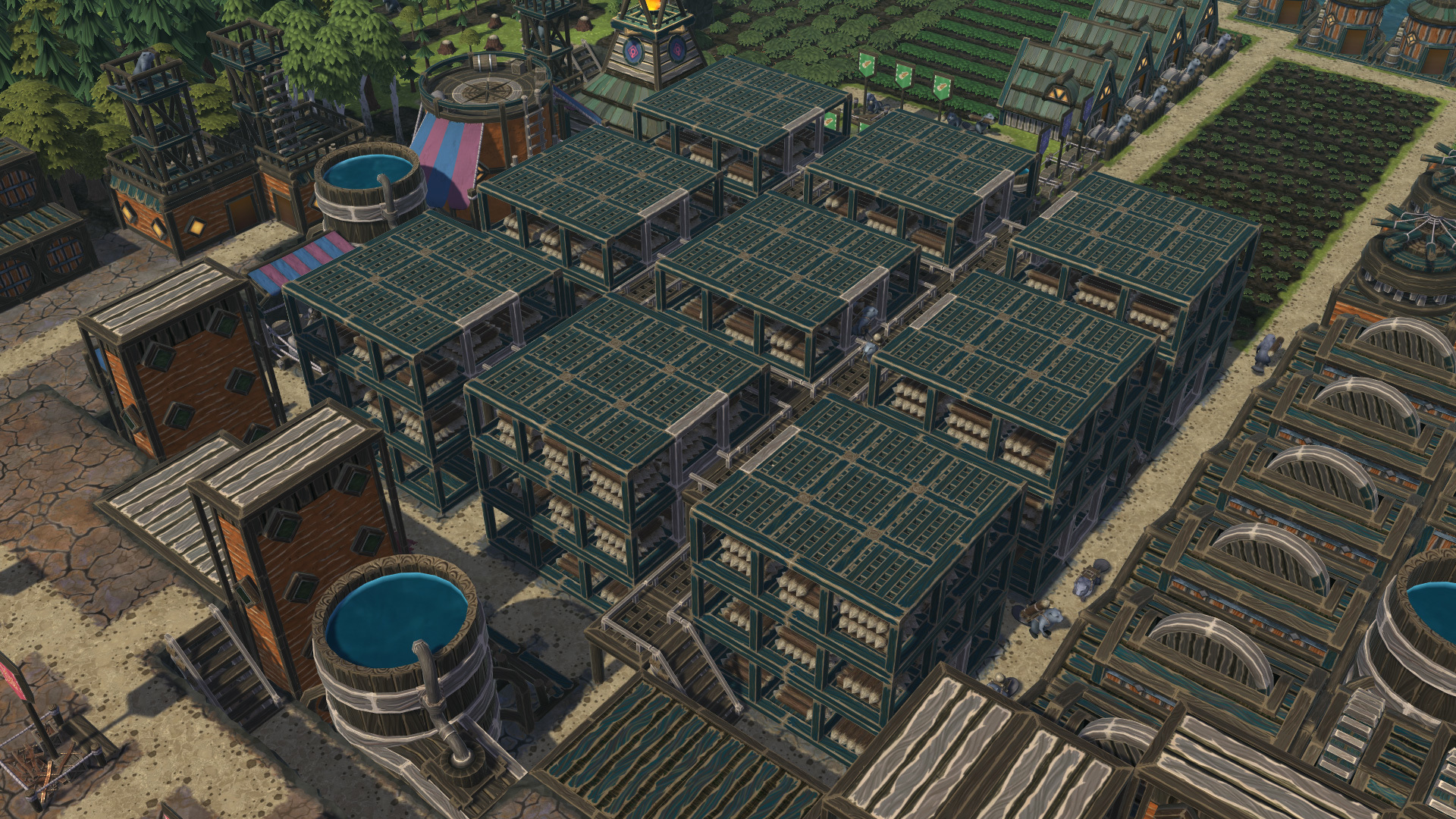


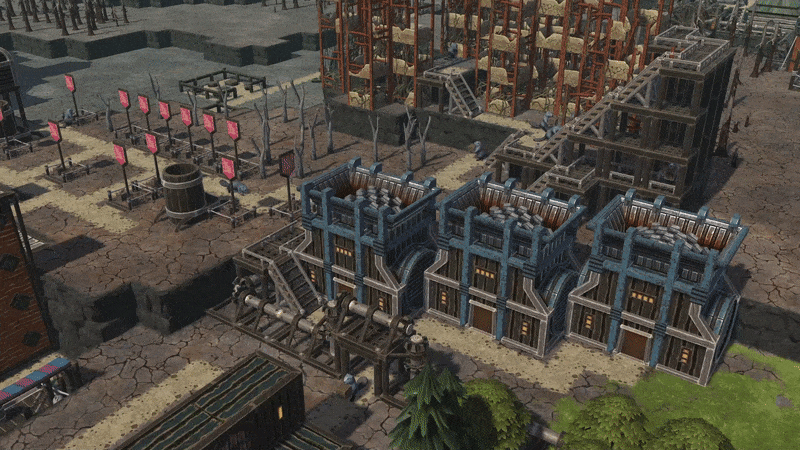
In Early Access, we’re adding new ways of utilizing metal such as the advanced Suspension Bridges. You might have spotted them in the Early Access trailer (or the Iron Teeth trailer, for that matter). You can build them in different sizes – and you can place new buildings below them. There will be more but you will need to wait until Wednesday for that. Why?
A week before, we’re going to start a series of daily previews here on Steam. Every day, we’ll look at a different aspect of Timberborn’s gameplay and how it looks in Early Access. If you’ve just discovered the game, this will give you a more in-depth overview of Timberborn’s features. If you’ve been following the beavers for a while, expect quite a few surprises.
Until then!
Timberborn Team
If you missed the memo, Timberborn Early Access launches September 15! There’s a lot of new stuff coming to the game, some of which we’re still keeping a surprise. But today, let’s talk about the second playable faction, the Iron Teeth beavers!
We have first revealed the faction in a trailer shown at Awesome Indies Show Gamescom by IGN. If you have missed it, here it is again, this time without our comms manager's cat tree and babbling.
The philosophy behind the faction
Compared to Folktails, Iron Teeth are the busy beavers. They’re doing their best to harness the wasteland, viewing tormented Earth as timbertech testing grounds. They live to work, not the other way around. For them, technology is both a means and a goal. Take water, for example. For these beavers, it is a measurable power that keeps gears running rather than nature’s gift of life.
We wanted Iron Teeth to be more or less a counterpart to Folktails. Our idea for their colonies was to use that darker, industrial theme with blocks of tall, brick-like buildings. Engines are there too, emitting smoke and propelling Iron Teeth’s progress forward. Because of their reliance on power and higher water consumption, we envision the Iron Teeth settlements as tighter, more squeezed in and vertical compared to Folktails’ vast villages in the midst of golden fields.
The many ways to breed
The Iron Teeth are also a perfect example of how iterative our work on Timberborn has to be. We were looking for a way to make this faction feel very industrial and productivity-driven. Adding engines and other machines shows their affinity for timber-tech, sure, but we needed something special. So, we looked at the cozy lodges of the Folktail families, and we decided to give the Iron Teeth something entirely different by separating adults from kits. We wanted adults to live in cramped barracks – that perhaps wouldn’t even satisfy Comfort – while kits would grow up in kit-only nurseries.
Nurseries have been scrapped... but our beaver-eyed viewers might have spotted them in Timberborn's early access trailer, which was recorded while they were still a thing.
The idea looked good on paper, but Nurseriers turned out to be a balance problem (a few nurseries would be enough for a huge town) and hard to explain. So, even though we had a really nice 3D model, we had to scrap them and eventually replace. Breeding Pods work much better in both regards, but also feel more post-apocalyptic AND add a unique “production chain”. You'll read more about them in a moment.
The faction’s style and architecture
The settlements built by the Iron Teeth might strike a Folktails fan with their different, Timberborn-e feel but that’s okay as Jakub Mathia, our Art Director, is ready to explain:They were going to be the tough, hard-working guys, we knew that right from the start, and the name *Iron Teeth* came up early. No wonder their graphite-like, bluish fur resembles steel, while their buildings are covered with wooden roofs similar to patinated metal. The engineering feats of this faction pushed us to search for inspirations in the 19th-century industrial revolution. We matched that with the architectural shapes and colors influenced by the native communities of the Middle East and Latin America, resulting in the orange-and-indigo mix you can see.

It's the little things like subtle patterns on the fur.

An old screenshot showing older textures and models. The large building in the center was a "new" Builder's Hut before the idea of District Centers was born, and the Hut received yet another model.
Michal Zomerski, Timberborn’s 3D Artist, chimes in to talk about the design process behind the Iron Teeth buildings. Thanks for the spoilers ahead of the next paragraph, Michal. Sheesh.
The Iron Teeth live in the industrial barracks and the London-like rowhouses, and they get to stack their log piles, which means densely populated areas quickly turn into tall clusters of buildings. But we didn’t want to just give them cuboid blocks of flats, hence the slanted walls and a design that allows power shafts to connect “through” windows. On the other hand, we got to play with metal and, for example, redesign the engine. This one has a dedicated power connector which allowed us to play with the model and draw inspiration from DaVinci’s works.
Also, here’s a bit of beaver trivia. Beavers’ incisors (teeth) have an orange enamel because of a high amount of iron. Also, Timberborn’s working title was Iron Teeth. Makes sense, huh?
Faction mechanics and unique buildings
Faction trait
While Folktails' never-ending appetite results in higher food consumption, Iron Teeth use more water.They work hard and need to quench their thirst often which results in 15% more water consumption.
The above has been removed with the addition of Difficulty Modes where you can customize the consumption rates regardless of faction.
Housing
Comfort is not that important to Iron Teeth – if you get a place to crash after a shift with a roof over your head, that’s enough. They grow their vertical settlements by squeezing their kin in the following buildings:- Rowhouse – Tall and narrow building that houses five beavers.
- Large Rowhouse – Even taller, these rowhouses are for eight beavers.
- Barracks – A large, space-efficient dwelling for ten dwellers.
- Large Barracks – Perfect for groups of workers, this box of a house has a capacity of sixteen dwellers.

Breeding
The work consumes so much of Iron Teeth life they have abandoned the traditional beaver ways. To ensure proper growth of the next generation, the Iron Teeth have invented breeding pods. All newborn kits begin their life in those, suspended in a nutritious liquid. To sustain growth, the “beaver juice” has to be refilled. All adults in the colony share that duty.- Breeding Pods. This is Iron Teeth’s only way of bringing kits to the world. After a kit is born and placed here, all adult beavers will bring water and berries to sustain the growth. Once it's grown enough, the kit will leave the tank to live in a harsh environment and grow further, eventually becoming an adult. Other beavers argue that this process might be going too far.

Other unique buildings
Iron Teeth are industrious and their unique buildings are designed to increase their productivity and efficiency, even at a cost of fresh air in the neighbourhood.- Industrial Log Pile. Wood is in constant demand and it’s easier to store it when you’ve got specialized warehouses. These are Solid which means they are stackable, and they don’t have to be placed on the ground.

- Deep Water Pump. In Early Access, water pumps are no longer limited to one tile of depth – and the Iron Teeth upgraded their pump even further so they work up to SIX levels deep.

- Engine. The pinnacle of timbertech is only available to the Iron Teeth, offering supreme energy output in exchange for fuel and the need for an employee. Other beavers wouldn’t approve of burning wood and the smoke that comes with it, but the Iron Teeth don’t mind.

Changes to the metal production chain
While this is a global change – Folktails also profit from it – the work on Iron Teeth pushed us to change how metal works. Scavenger’s Hut was replaced with a Scavenger Flag. The beaver employed there is tasked with gathering scrap metal from ruins in range. Scrap metal is then processed into usable metal blocks in a brand new, powered building: a Shredder.
In Early Access, we’re adding new ways of utilizing metal such as the advanced Suspension Bridges. You might have spotted them in the Early Access trailer (or the Iron Teeth trailer, for that matter). You can build them in different sizes – and you can place new buildings below them. There will be more but you will need to wait until Wednesday for that. Why?
More previews and launch countdown
Timberborn releases at 5 PM CET, September 15, 2021.A week before, we’re going to start a series of daily previews here on Steam. Every day, we’ll look at a different aspect of Timberborn’s gameplay and how it looks in Early Access. If you’ve just discovered the game, this will give you a more in-depth overview of Timberborn’s features. If you’ve been following the beavers for a while, expect quite a few surprises.
Until then!
Timberborn Team






